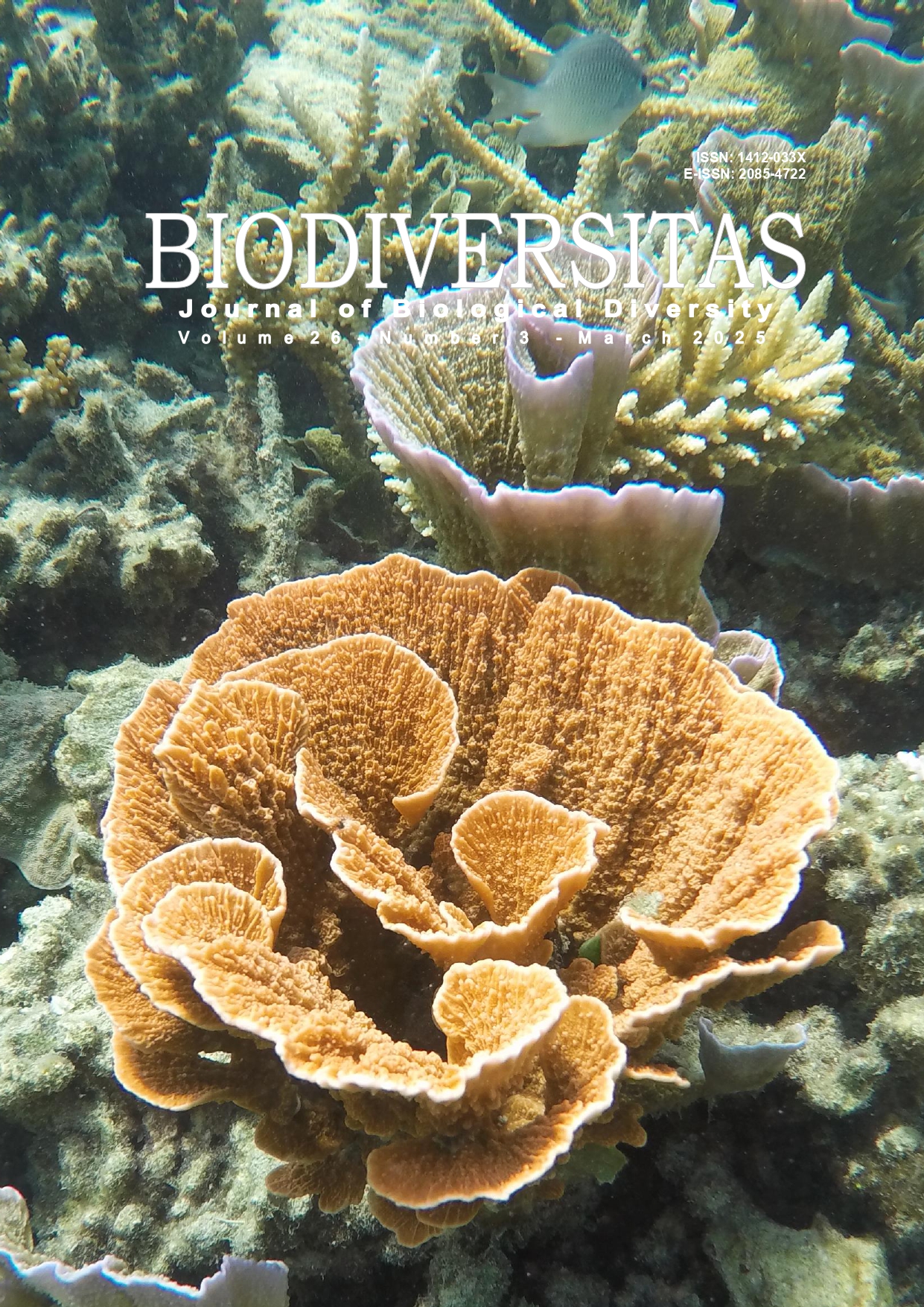Evaluating the potential of gut bacteria in Oryctes rhinoceros larvae as biocontrol agents against Ganoderma boninense pathogen in oil palm plantations
##plugins.themes.bootstrap3.article.main##
Abstract
Abstract. Surbakti RLB, Marheni, Bakti D. 2025. Evaluating the potential of gut bacteria in Oryctes rhinoceros larvae as biocontrol agents against Ganoderma boninense pathogen in oil palm plantations. Biodiversitas 26: 1414-1413. Oil palm (Elaeis guineensis) is one of the important commodities in Indonesia. One of the plant pest and disease organisms that inhibit the growth of oil palm productivity is the Ganoderma boninense pathogen and the rhino pest insect (Oryctes rhinoceros). Insects have diverse and abundant microbes in their gut systems. Therefore, a comprehensive understanding of the function of gut bacteria in multispecies interactions may not only lead to the discovery of new resources for biocontrol but could also facilitate the development of new biopesticides. The larval stage of O. rhinoceros consumes empty oil palm fruit bunches to grow and develop into pupae. Various types of symbiont bacteria can be found in one type of insect. These bacteria are known to produce several hydrolase enzymes such as amylase, cellulase, protease, lipase, and chitinase. This study aimed to identify bacteria from the intestines of O. rhinoceros larvae and determine their potential to inhibit the growth of G. boninense, which causes stem rot disease in oil palm plants in vitro. This research was conducted at the Disease Laboratory, Faculty of Agriculture, University of Sumatera Utara, PT. Genetics Science Indonesia, Tangerang, between April - September 2024. The methods used include morphological identification of the isolate and physiological, biochemical, and molecular identification of the bacteria using 16s rRNA gene sequencing and PCR (Polymerase Chain Reaction), as well as antagonist tests and hydrolysis tests for chitinase, protease, and cellulase enzymes. In this study, two bacterial isolates capable of inhibiting the growth of G. boninense in vitro were identified; isolate BS1, identified as Bacillus stercoris, with an inhibition rate of 42.14%, and isolate BS2, identified as Pseudomonas aeruginosa, with an inhibition rate of 63.68%.

